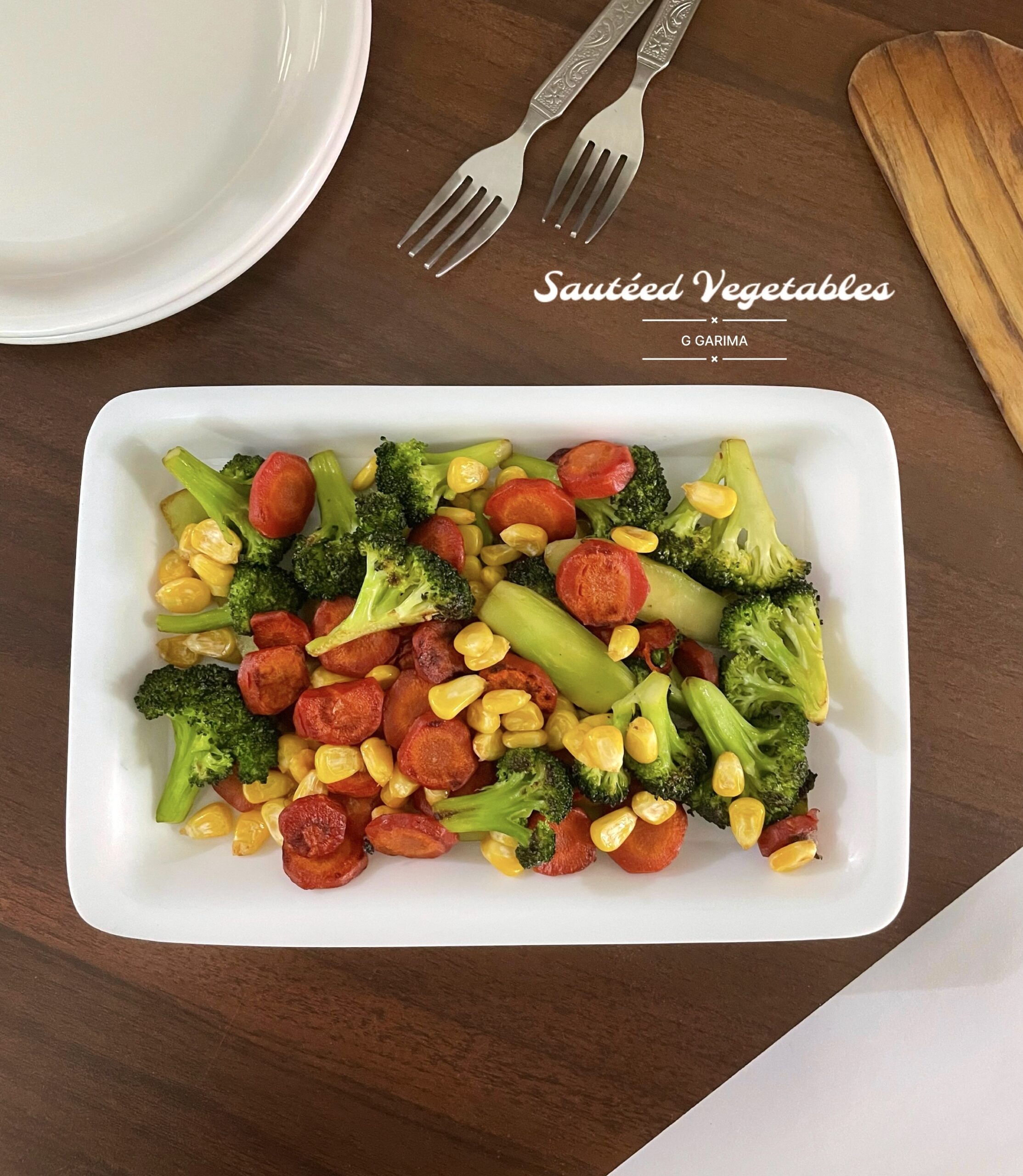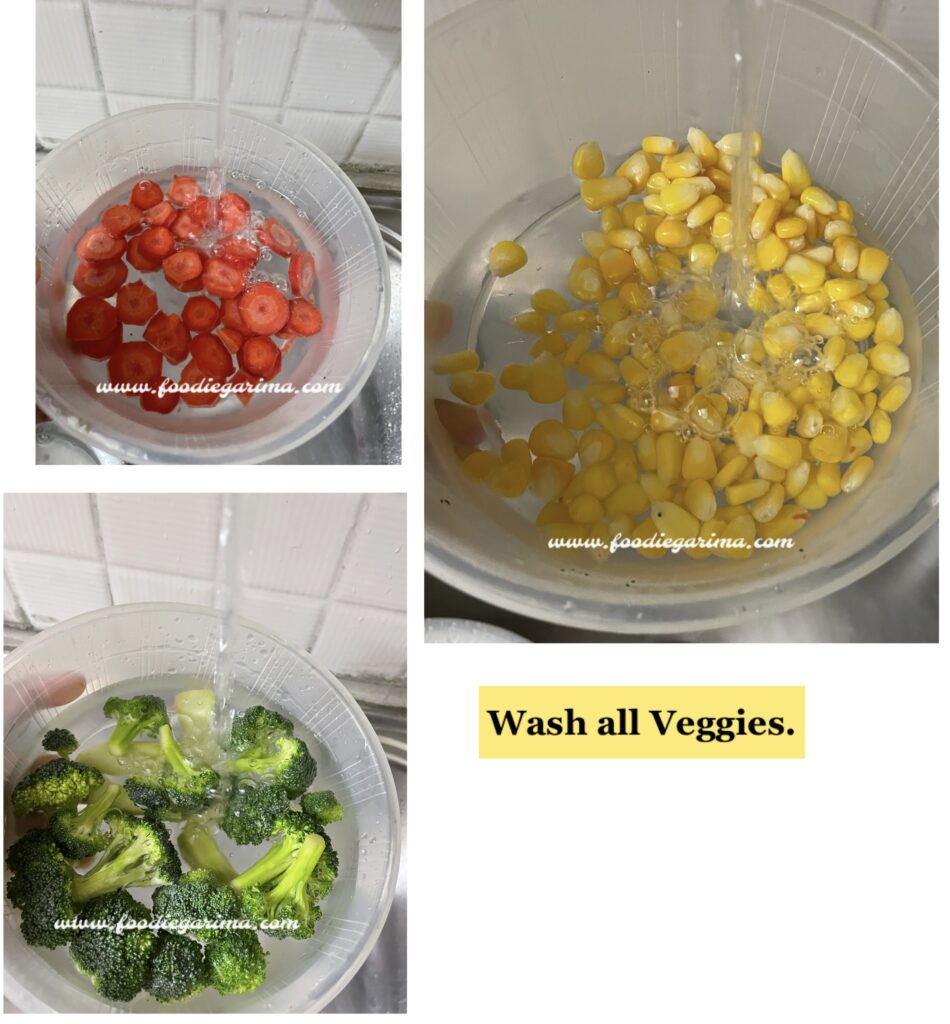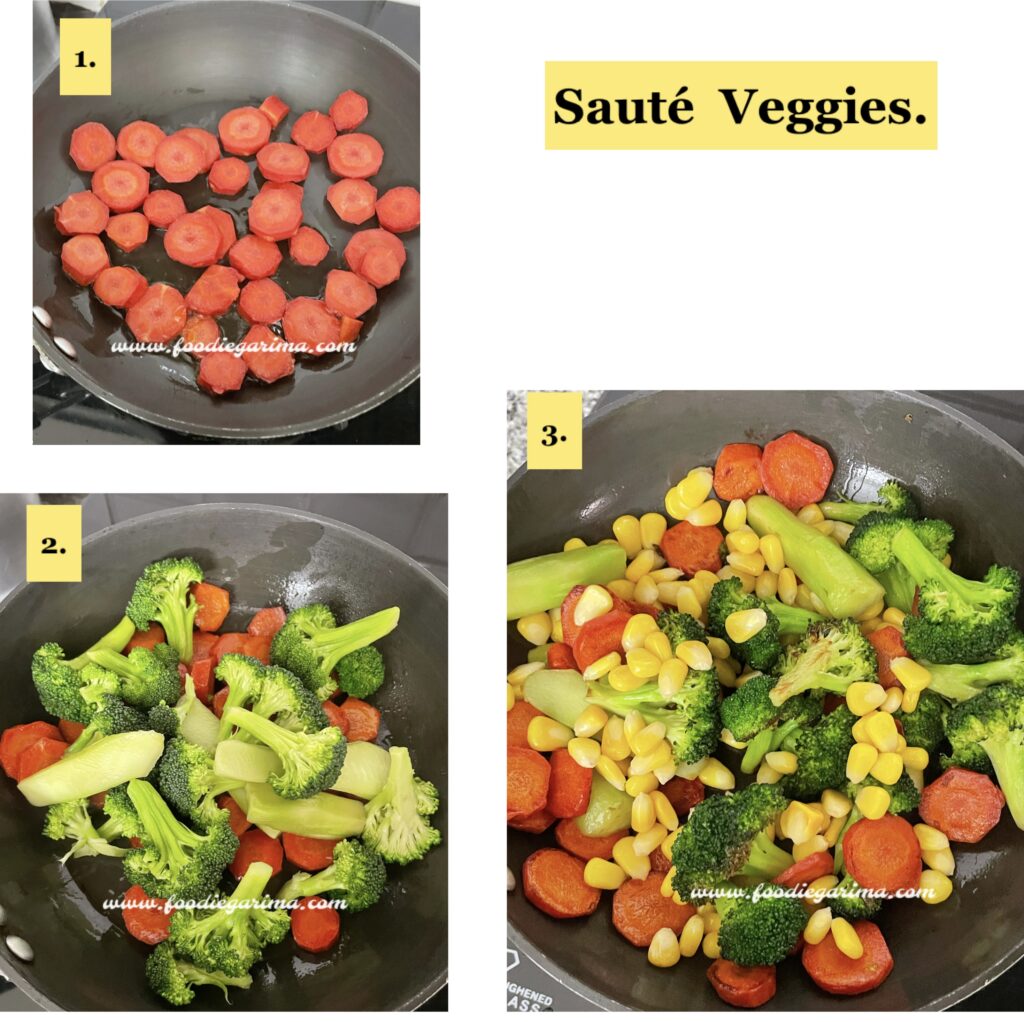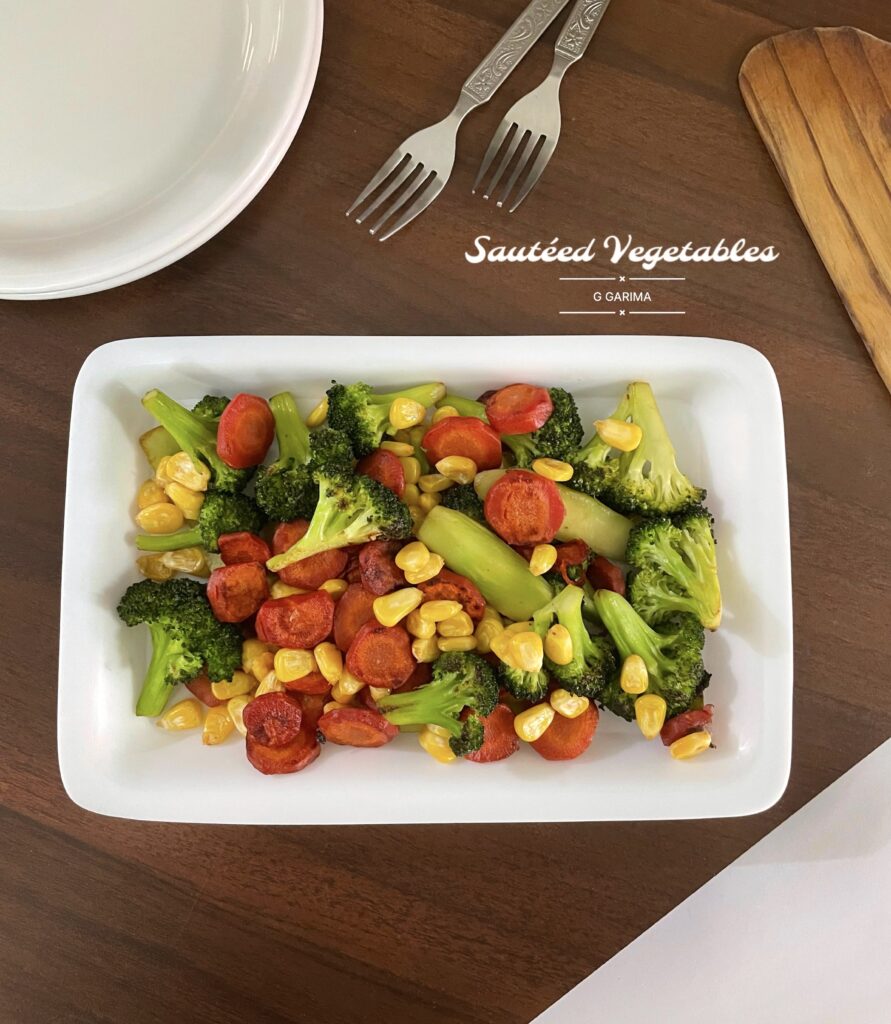2 April, 2025
Sautéed Vegetables Platter Recipe

Sautéed Vegetables are a simple yet delicious way to enjoy a nutrient-rich dish packed with flavor.
Whether you’re looking for a quick side dish or a main course, Sautéed Vegetables offer endless possibilities. Not only are they easy to prepare, but they also retain their vitamins and minerals, making them a fantastic choice for a healthy meal.
Choosing the Right Vegetables
Best Vegetables for Sautéing
Certain vegetables work better than others for sautéing. Some of the best options include:
- Bell peppers
- Zucchini
- Mushrooms
- Carrots
- Broccoli
- Spinach
- Green beans
- Asparagus
I am using Broccoli, Carrots, and Sweet Corns here.
Seasonal and Fresh Choices
For the best flavor, always use fresh, seasonal vegetables. Farmers’ markets and local grocery stores often have the freshest options, which enhance the taste and texture of your sautéed dish.
Essential Ingredients for Flavorful Sautéed Vegetables
Oils and Fats: Which One to Use?
The type of oil you use can greatly impact the final taste. Some great options include:
- Olive oil (for a rich, Mediterranean taste)
- Butter (for a creamy flavor)
- Avocado oil (for a high-smoke point option)
- Coconut oil (for a slightly sweet touch)
Herbs and Spices for the Best Taste
Seasonings bring out the natural flavors of vegetables. Consider adding:
- Garlic
- Onion powder
- Oregano
- Thyme
- Black pepper
- Red pepper flakes for some heat
Preparing Your Vegetables
Washing and Cleaning Properly
Always wash vegetables thoroughly to remove dirt and pesticides. Use a strainer for leafy greens and scrub root vegetables under running water.

Cutting Techniques for Even Cooking
Chop vegetables into uniform pieces to ensure even cooking. Harder vegetables like carrots should be sliced thin, while softer vegetables like mushrooms can be left in larger chunks.
Step-by-Step Guide to Make Sautéed Vegetables

- Heat a pan over medium heat and add your oil or butter.
- Start by adding harder vegetables (like carrots and broccoli) first since they take longer to cook.
- Add softer vegetables (like mushrooms and bell peppers) a few minutes later.
- Stir frequently to prevent burning.
- Cook for about 5-7 minutes, or until vegetables are tender-crisp.
- Season with salt, pepper, and herbs of your choice.

Delicious Variations of Sautéed Vegetables
- Garlic Butter Sautéed Vegetables: Cook with garlic and butter for a rich, savory flavor.
- Spicy Sautéed Vegetables: Add red chili flakes or cayenne for a fiery kick.
- Mediterranean-Style: Use olive oil, oregano, and a squeeze of lemon juice.
Serving Suggestions
Sautéed vegetables pair well with:
- Quinoa or rice
- Pasta dishes
- As a topping for toast or sandwiches
Sautéed vegetables are a quick, healthy, and delicious way to enjoy fresh produce. With endless variations, you can easily customize them to fit your taste preferences. Whether as a side dish or a main meal, sautéed vegetables make eating healthy both easy and enjoyable.
FAQs
1. How do you keep sautéed vegetables from getting soggy?
Avoid overcrowding the pan and cook over medium-high heat to maintain texture.
2. What is the best oil to use for sautéing vegetables?
Olive oil and avocado oil are excellent choices due to their rich flavor and high smoke points.
3. Can you make sautéed vegetables ahead of time?
Yes! Store in an airtight container and reheat over medium heat for the best taste.
4. What vegetables should not be sautéed together?
Vegetables with vastly different cooking times, like potatoes and spinach, should be cooked separately.
5. How do you add protein to sautéed vegetables?
Add tofu, or beans for a more filling dish.